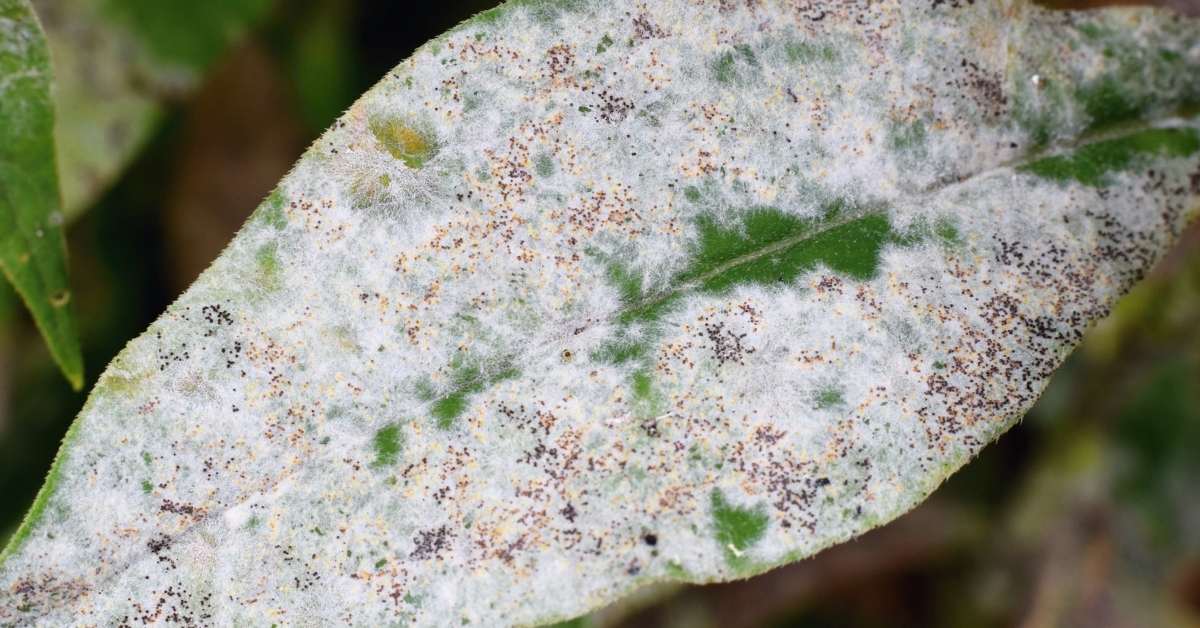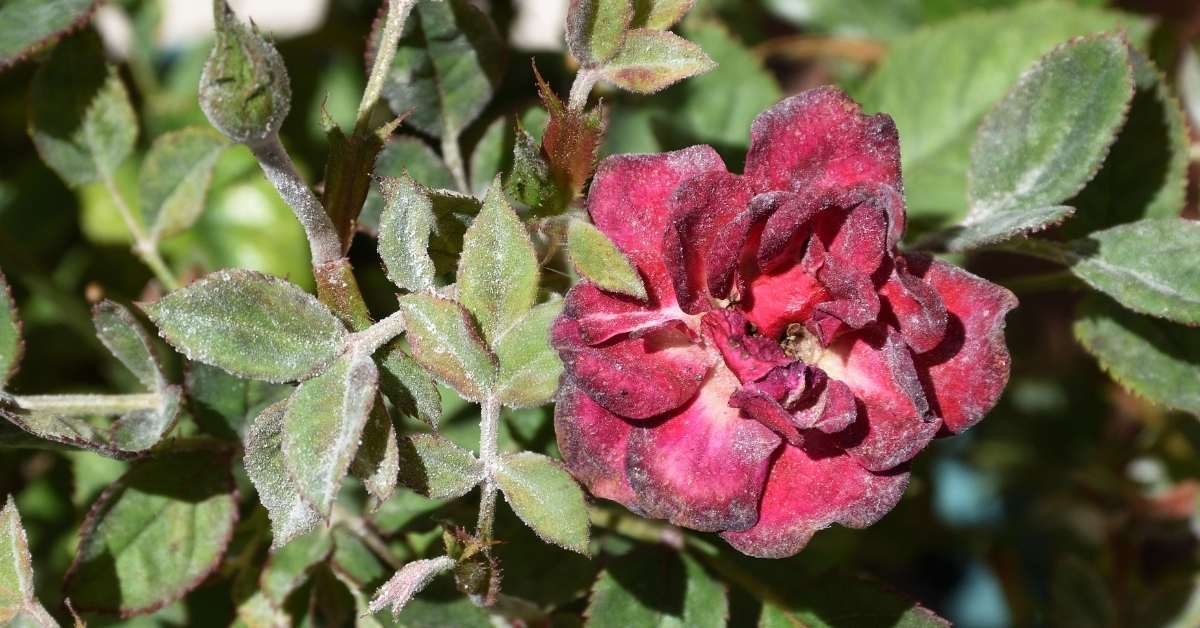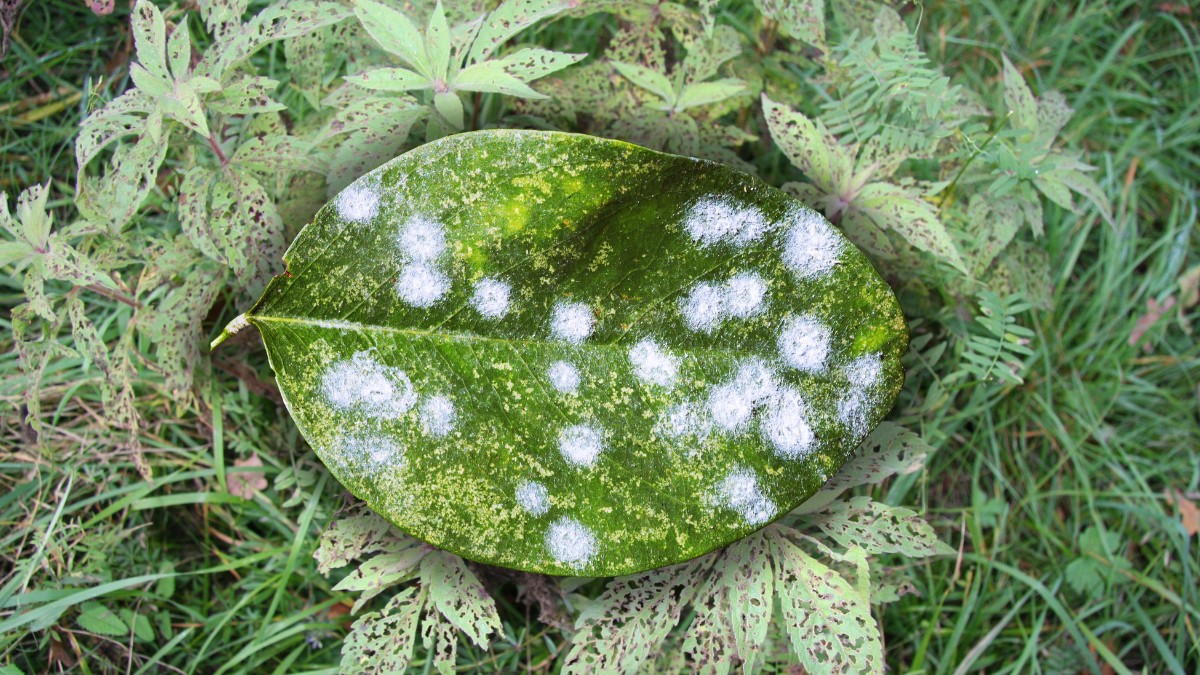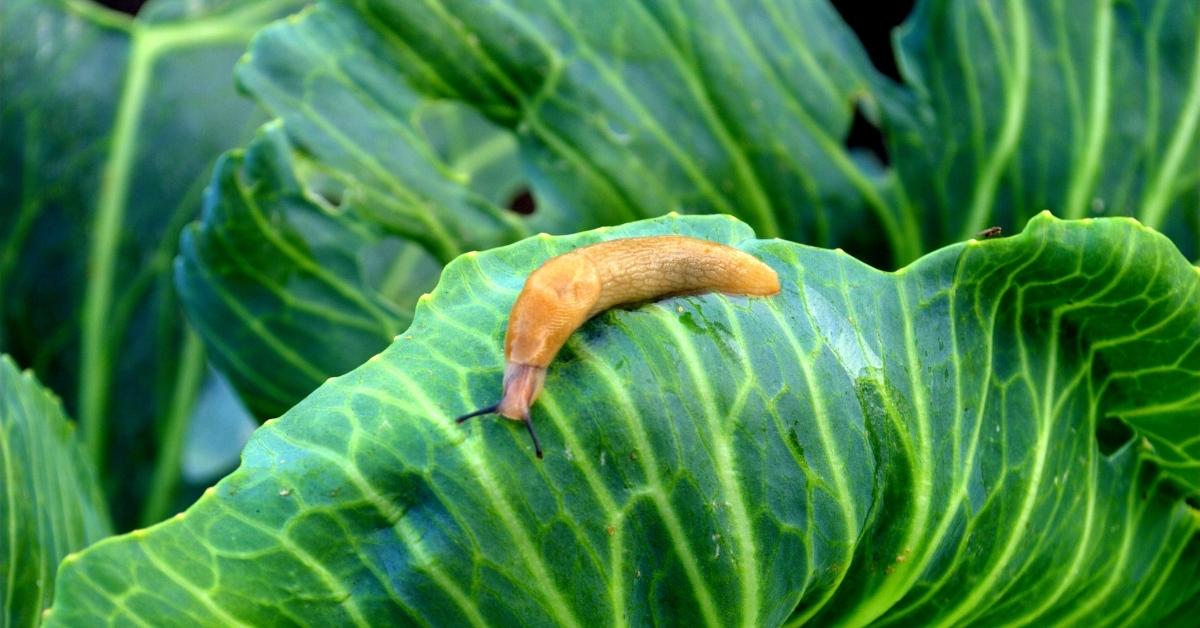Powdery mildew is one of the most easily recognized and identifiable of all plant diseases. They are also recognized to attack a wider variety of plants than any other plant disease. Here is a detailed explanation of powdery mildew disease on plants and how to prevent and/or treat it.
The symptoms are characterized by the presence of whitish, powdery thread-like growth on the surfaces of leaves, stems, and often flower petals. Infection by the powdery mildew fungus seldom kills affected plants, although it can cause foliar distortion, defoliation, inhibit growth and weaken the plant’s health.
Powdery Mildew Disease on Plants
Powdery mildew disease on plants obviously reduces the aesthetic appeal and value of a plant. Cut flowers or indoor potted plants and succulents can be affected with white powdery mildew. It will continue to thrive and spread on cut flowers. Thus a small infection will continue to expand.
Powdery mildew on roses can be very severe, as well as phlox, lilac, and bee-balm in particular but can infect nearly any plant.

Moreover, spores released from the powdery mildew on plants in the home or garden may cause respiratory discomfort since the fungus spores are easily dislodged and carried by air currents.
In recent years the effects of mold and mildew have become more well known, and allergies and respiratory health issues associated with mold and mildew are a real concern. Mold spores are incredibly small and usually not visible to the naked eye. If you can easily see mildew, it means you are looking at tens of thousands of spores or more.
Description of powdery mildew
Powdery mildew is a fungal infection (and an infestation if not appropriately cured) that affects various plants. It’s one of the most well-known and widely spread plant diseases.
Powdery mildew fungi come in a variety of forms, but they all have the same symptoms on plants.
It starts out invisibly as a few spores on the leaves, like spots or patches of white to grayish, talcum-powder-like growth, and quickly spreads, eventually yellowing the leaves, leading to the fall of those. On other plants, powdery mildew makes the leaves twist, buckle, or otherwise distort.
The disease is unsightly, but it is rarely deadly. The plant does not die but stresses and weakens.
It may occur in some plants, like distortion of buds, blooms, flowers, and young fruits.
Powdery mildew-resistant cultivars may be offered in some situations. The resistant plants are varieties of cantaloupe, cucumber, melons, pears, pumpkins, and squash.
What causes the powdery mildew Infestation?
It seems that the powdery mildew begins in plant debris which starts producing spores in spring. These spores are carried towards plants by wind, insects, and splashing water.
Also, dampness or high humidity, crowded plantings, and poor air circulation can encourage the growth and spread of these diseases.
Mold and mildew spores are all around us and abundant in a garden. They take hold and thrive when conditions are beneficial to their growth. The environmental conditions which are most favorable for disease development are cool night temperatures (about 60 F) with high humidity (90-99%) and warm day temperatures (about 80 F) with humidity of 40-70%.
Mildew Prevention:
Since we typically can’t control these environmental conditions, good growing practices can aid in the control of powdery mildew. We’d all like to have abundant sunshine, but we often want to have plants grow in less than optimal areas.
Some measures to help reduce the likelihood of powdery mildew fungicide include watering plants early in the day to allow moisture on plant leaves to dry prior to sunset. Spacing plants allows ventilation through the foliar canopy.

Treatment of powdery mildew
Remove and destroy any diseased plant components after your plants have been affected. In the fall, remove as much of the plant and its debris from the afflicted vegetables and other annuals as feasible.
This reduces the fungus’ capacity to survive the winter. Infected plant waste should not be composted. Temperatures are frequently insufficient to destroy the fungus.
Also, you must avoid overhead watering that will only help to reduce the relative humidity.
Improve air circulation of susceptible plants by thinning and pruning, which also reduce relative humidity and infection.
Very interesting is that the most effective measure in preventing and treating the powdery mildew is to spray the foliage of your plants with plain water from the hose. Powdery mildew hates water. The trick to this method is to do it early in the day, so the foliage completely dries before evening; otherwise, you can attract other diseases in your garden.
As it is described by the Utah state university, another method of destroying powder mildew is to apply weekly at the first signs of infection; a spray made with baking soda (bicarbonate).
But if cultural control is not enough, we must apply a fungicide. There are many fungicides available, so check first the label to be sure they are safe and effective for your type of plant that is infected.
Chemical fungicides, such as triforine, can also be used for ornamental plants. But keep in mind! Chemicals work best when they’re used in conjunction with cultural restrictions.

Powdery mildew’s life cycle
Powdery mildews are host-specific: they cannot survive without the proper host plant.
The spores that are formed during spring begin production of new spores once the weather warms, especially in warm dry climates. Spores never stop producing new spores, which are carried by wind to other leaf surfaces and nearby plants. If the infected leaves are not destroyed, the problem will only get worse.
The majority of powdery mildew fungus form thin layers of mycelium on the afflicted plant’s surface. The spores, which are generated in chains that can be seen with a hand lens, are responsible for the majority of the white, powdery growth visible on the plant’s surface. These spores are found on branching stalks that resemble miniature trees.

